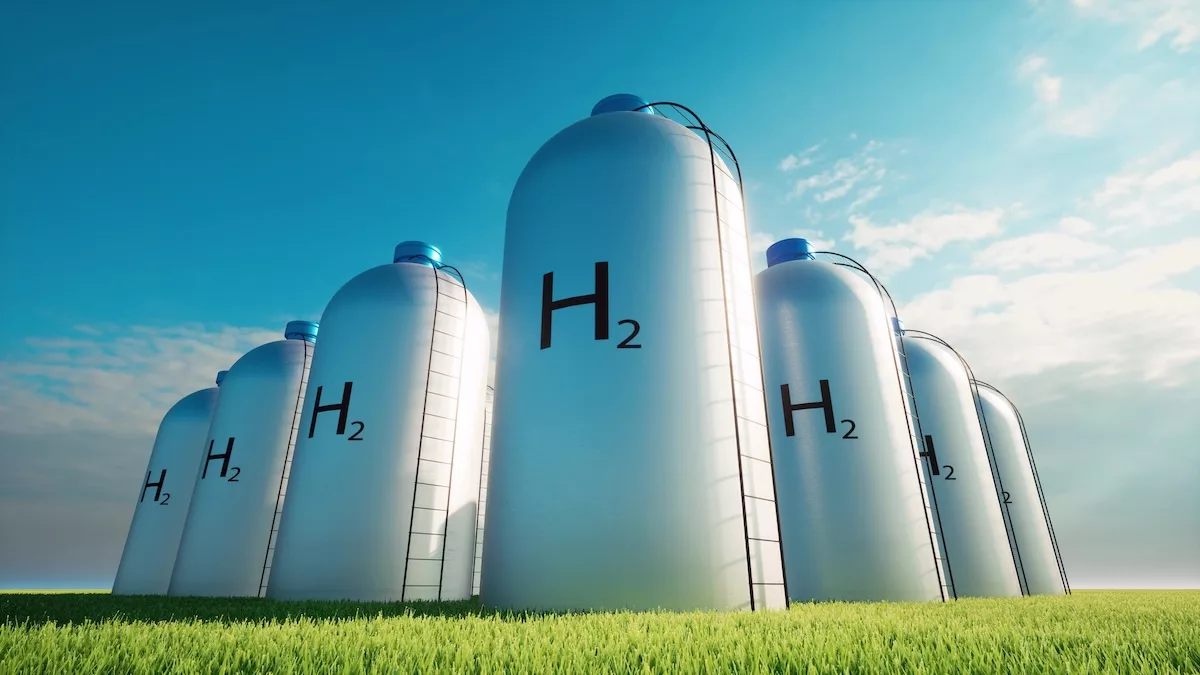
Hydrogen
Likely End Users
In this the last of five short blogs, we will address, again without going deeply into the weeds, the most likely end users of hydrogen: directly as a fuel burned in place of current fuels e.g., natural gas, feed to fuel cells, and the production of green ammonia and green methanol.
Direct combustion
Hydrogen can be directly combusted in fired heaters, home appliances, engines, gas, and turbines. While emitting no carbon dioxide, the combustion of hydrogen while forming water also forms some NOX, which if not controlled, is a pollutant. The NOX is formed by the reaction of nitrogen and oxygen in the combustion air at the high flame temperatures of hydrogen. In addition to controlling NOX, equipment will need to be either modified or designed to address challenges from hydrogen resulting from factors such as hydrogen having higher flame temperatures, higher flame speed, different radiant/convection duty splits, metal embrittlement, needing more stringent safety and controls, etc.
Pure hydrogen and high hydrogen content fuels have been and are successfully burned in fired heaters that have been either designed or modified to accommodate the fuel. The use of high content or pure hydrogen in gas turbines and engines is presently under significant development by many of the major manufacturers of these products.
If hydrogen is distributed to homes and buildings for use in furnaces, water heaters, stoves, etc. that are presently using natural gas as fuel, it will raise the issues just addressed but also safety challenges assuming a much higher concern and the task of modifying or replacement of millions of home appliances being very costly. Thus, it is challenging to see the use of hydrogen in homes and buildings being done at any significant scale in the near-term.
Fuel cells
Fuel cells create a reaction between hydrogen and the oxygen in air to directly produce electric power. The only emission from a fuel cell is water vapor. There are five major fuel cell types. Depending on the type they generally fit into broad two categories: low-temperature (< 248 °F) and high-temperature (> 300 °F) operation. The low-temperature processes fit small scale fixed and mobile applications e.g., transportation such as electric powered automobiles, backup power, etc. and the high-temperature processes are focused on large scale stationary power generation. At present low temperature cells are commercial and are being widely studied for improvements. For the most part, high-temperature cells are in various stages of development.
Green ammonia
True green ammonia is produced using the Haber-Bosch process by reacting green hydrogen with nitrogen that has been produced in a green electric powered air separation plant. Therefore, green ammonia production is CO2 emissions free. Gray ammonia, one of the largest produced chemicals, based on hydrogen produced by steam reforming of natural gas (or other hydrocarbons) reforming has been produced via the Haber-Bosch process for over 100 years. Today ammonia is produced in very large-scale plants running 24 x 7 with many having capacities exceeding 3,000 MTPD which co-produce large quantities of CO2 as they do not capture and sequester the CO2.
Recently a small green ammonia demonstration plant having an annual capacity in the of 5,000 MTPY (~ 15 MTPD avg) has been announced in Denmark. This plant is likely to be highly subsidized through Government support for green energy development. Given the small scale of these demonstration plants it will likely be many years before green ammonia can be produced at large scale to be competitive with present gray ammonia plants or future retrofitted or new large reforming plants with CO2 capture and sequestration to produce blue ammonia, but it is a starting point.
Green methanol
True green methanol is produced by reacting green hydrogen with captured green CO2 created in processes utilizing biomass e.g., a green electric powered ethanol plant. While reaction of CO2 and hydrogen to form methanol has limited commercial experience, the production of gray methanol based on hydrogen produced by steam natural gas (or other hydrocarbons) reforming to create a synthesis gas mixture (CO, CO2, H2) which in turn is reacted to form methanol has been produced practiced for over 80 years. Like ammonia, methanol is produced in very large-scale plants running 24 x 7 with many having capacities exceeding 5,000 MTPD which co-produce large quantities of CO2 as they do not capture and sequester the CO2 produced on the fire side of the steam reforming process.
There has been recently announced a small green methanol demonstration plant in Finland having annual capacity of 25,000 MTPY (74 MPTD avg). Like green ammonia, these plants are also highly subsidized. Given the small scale of these demonstration plants it may be many years before green methanol can be produced at large scale to be competitive with present gray methanol plants or future retrofitted or new large plants with CO2 capture and sequestration to produce blue methanol.
Biofuels
Hydrogen from biomass can be carbon neutral. Syngas can be produced from biomass using gasification technologies or by reforming renewable natural gas (RNG) produced by the fermentation of biomass wastes. The syngas can then be converted to liquid fuels, e.g. gasoline and diesel, using the commercially proven Fischer-Tropsch process. While hydrogen generation from biomass gasification has been demonstrated, it has only been done on a small scale and is not widely used. It is likely that scalability and cost concerns may limit its deployment as a large-scale source of hydrogen.
Conclusion
In concluding this series of blogs on hydrogen, it is important to note that for large-scale hydrogen projects to be developed in the near-term, government subsidies will be required to implement initial projects such as the recently launched US Department of Energy (DOE) H2Hubs $8 billion program to promote the development of clean hydrogen hubs across America. A key element of the H2Hubs program is to develop the entire supply chain from green hydrogen production to end users. It’s evident from media sources that many other countries and regions in the world have, or in the future will have, similar initiatives.
Let’s Talk
We will help you overcome strategic challenges to realize the business value you seek.


